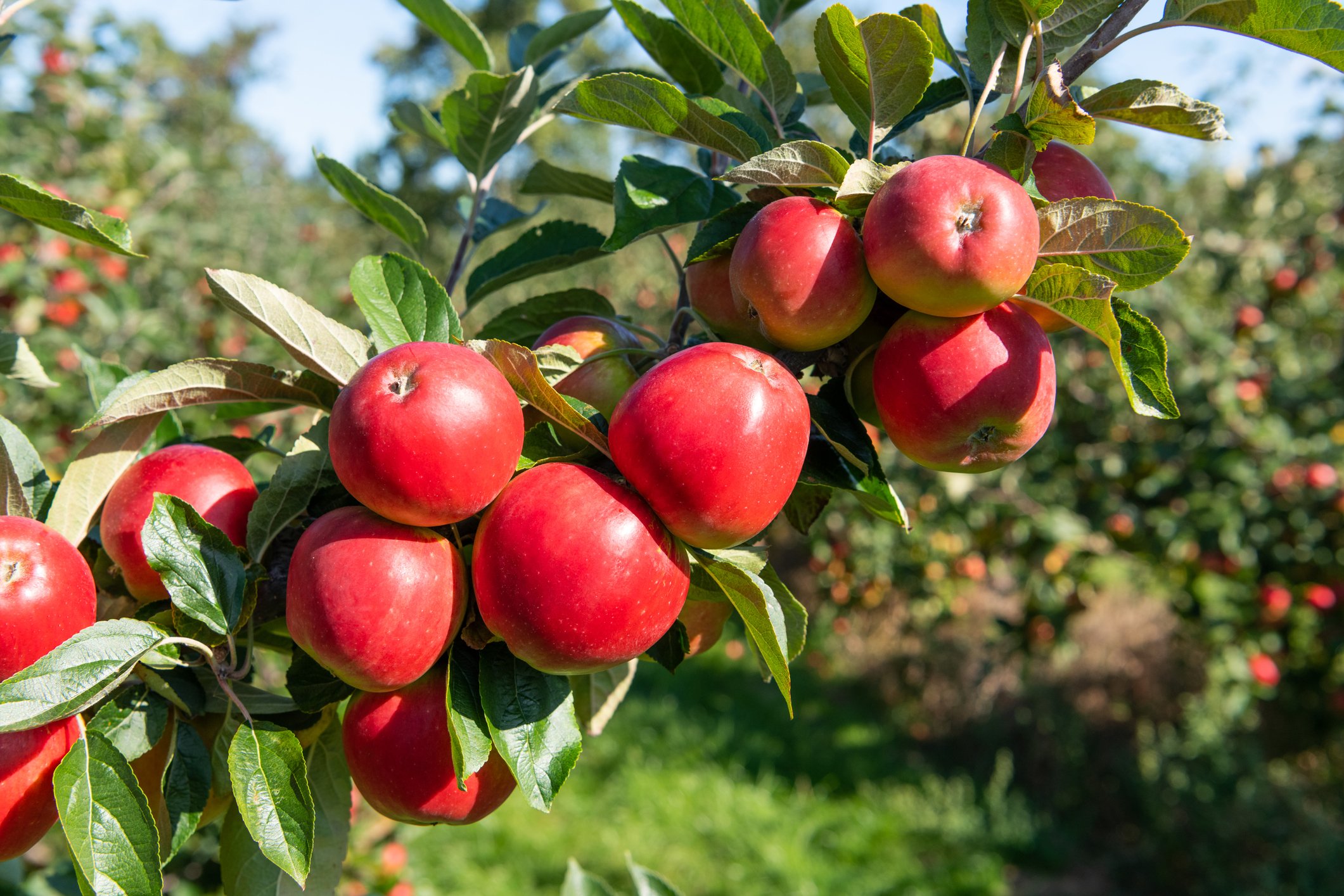Table of Contents
Apple has long been a cornerstone of our culinary traditions, enchanting our taste buds with its delightful taste. This fruit adorns our plates not just as a wholesome snack but as a starring role in a variety of dishes. Yet, to truly relish the apple’s taste, one must be well-versed in when to harvest apples and how to store and process these gems.
The apple harvest season can be thrilling yet intricate. Each variety of apples reaches its peak ripeness at its own unique pace. Knowing when and how to pick your apples is crucial to maximising their flavour and freshness. After the harvest, properly storing apples will ensure a steady supply throughout the winter months. Finally, mastering the art of processing apples opens the door to endless culinary possibilities.
Let us embark on an apple adventure, arming you with the wisdom to embrace and enjoy this cherished fruit. Together, we’ll Understand how to harvest, store, and process apples to perfection.
Cultivating the Perfect Orchard
To truly master the art of the apple, one must first comprehend the basics of apple cultivation. By selecting the ideal variety and nurturing the perfect growing environment, you lay the groundwork for a bountiful harvest. Understanding when to harvest apples is crucial to achieving the best results.
Selecting the right apple variety is essential, as each type offers unique flavours, textures, and uses. Additionally, some varieties are better suited to specific climates and resistances to pests or diseases. Investigate and select apple varieties that resonate with your desires and tastes. Upon choosing your apple varieties, it’s time to cultivate the perfect conditions for their growth. Apples require well-drained soil, adequate sunlight, and a balanced supply of nutrients. Regular tree care, including pruning and monitoring for pests or diseases, will encourage healthy growth and a bountiful harvest.
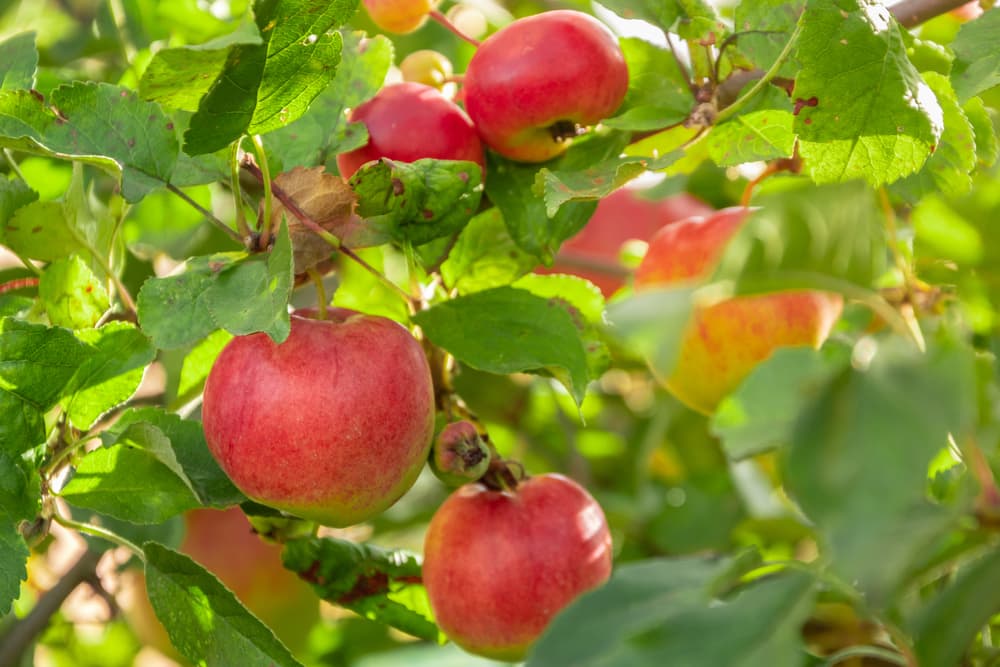
By nurturing your apple trees and providing the proper care, you create a solid foundation for a successful apple harvest and a wealth of delicious apple dishes for you and your loved ones to enjoy. A successful apple harvest begins with the ability to determine when the apples have reached peak ripeness. This crucial skill ensures that you’ll be picking apples at their prime, ready for storage or processing.
Determining Ripeness
1. Colour Change
One of the most reliable indicators of apple ripeness is a noticeable shift in colour. As apples mature, their skin changes from green to their characteristic hue, such as red, yellow, or orange. Observe the apples regularly and look for the ones that have achieved their typical ripe colour.
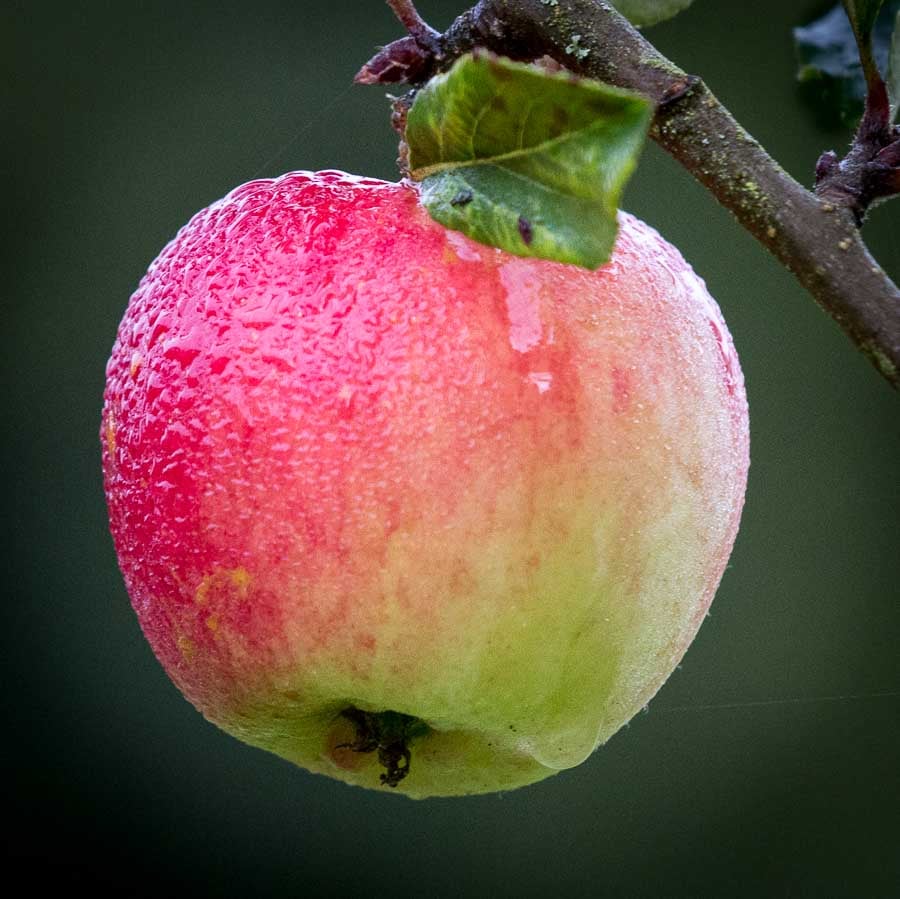
2. Firmness
The texture of a ripe apple is firm but not hard. Gently press the skin using your thumb; if the apple yields slightly under pressure, it’s likely ripe. Be cautious not to bruise the fruit while checking its firmness.
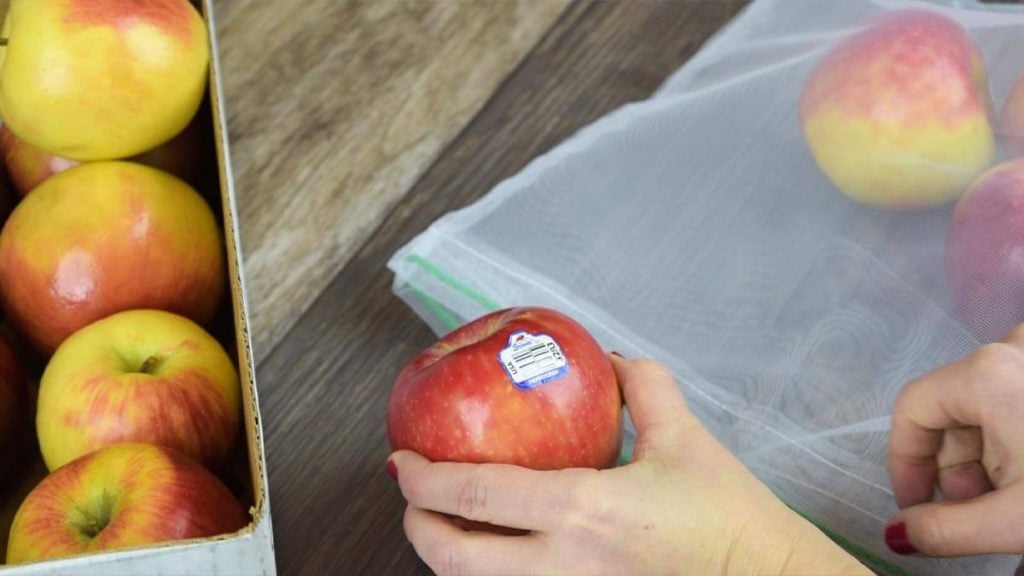
3. Taste Test
The ultimate test of ripeness is sampling the fruit. When assessing an apple’s readiness for harvest, trust your senses; a juicy, crisp, and flavorful bite is a sure sign. Keep in mind that some apples will continue to mature post-harvest, so don’t worry too much, as the taste will change.
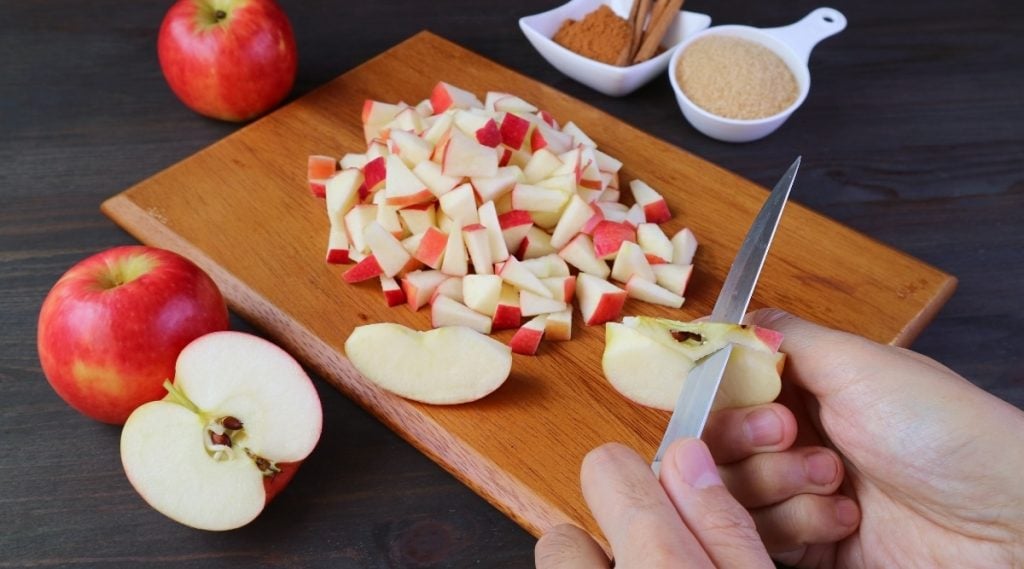
Proper Harvesting Techniques
1. Hand-Picking
Hand-picking is the preferred method for harvesting apples to ensure minimal damage to the fruit. To pick an apple, grasp it firmly and twist gently, rolling it upwards and away from the tree. This technique helps to prevent accidental detachment of neighbouring apples or unnecessary damage to the tree.
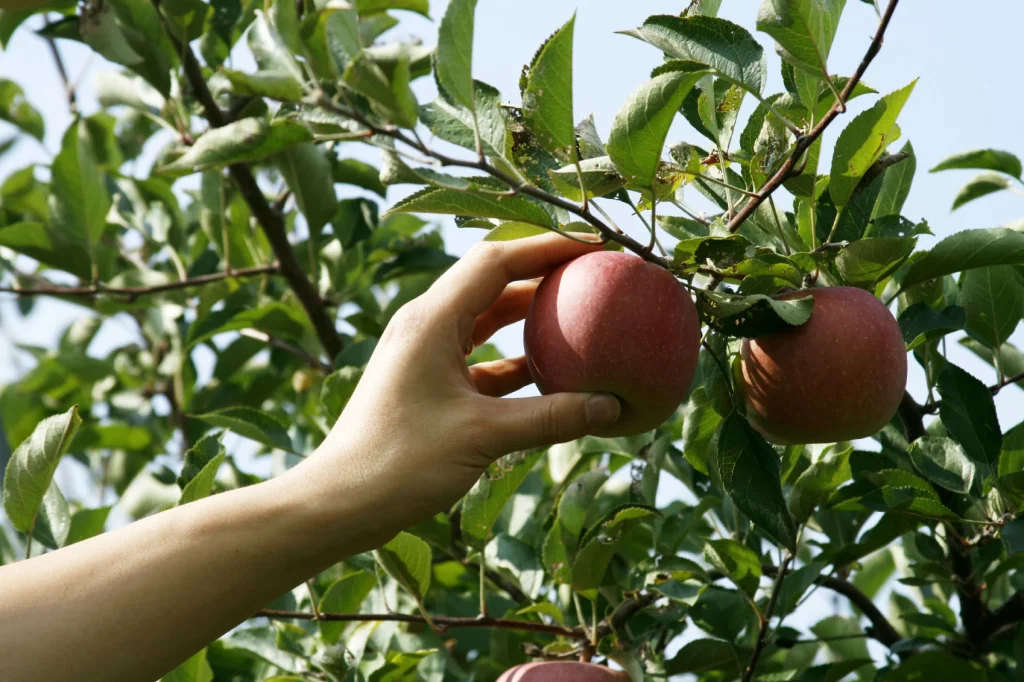
2. Use of Picking Tools
For hard-to-reach apples, consider using specialised fruit-picking tools, such as fruit pickers with telescopic poles or baskets. These tools can help you access high branches without straining yourself or damaging the tree.
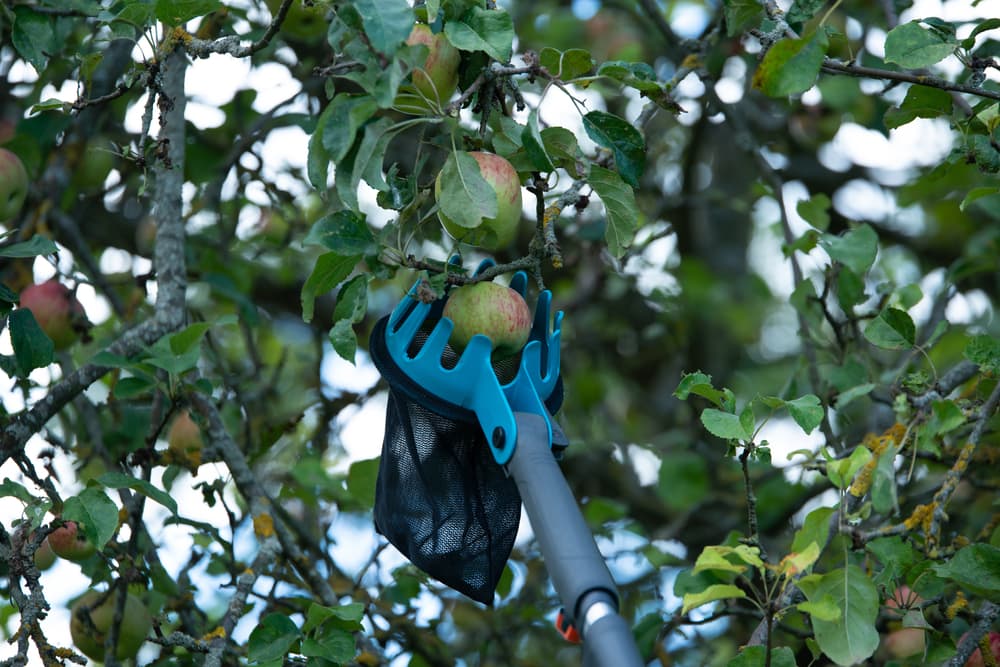
3. Harvesting Safety Measures
Being aware of when to harvest apples ensures you’re prepared and safe during this process. Wear appropriate attire to shield yourself from potential perils, such as insect encounters or wayward branches. If a ladder is required, confirm its stability and security before ascending. Always have a spotter nearby to assist you, especially when picking from high branches.
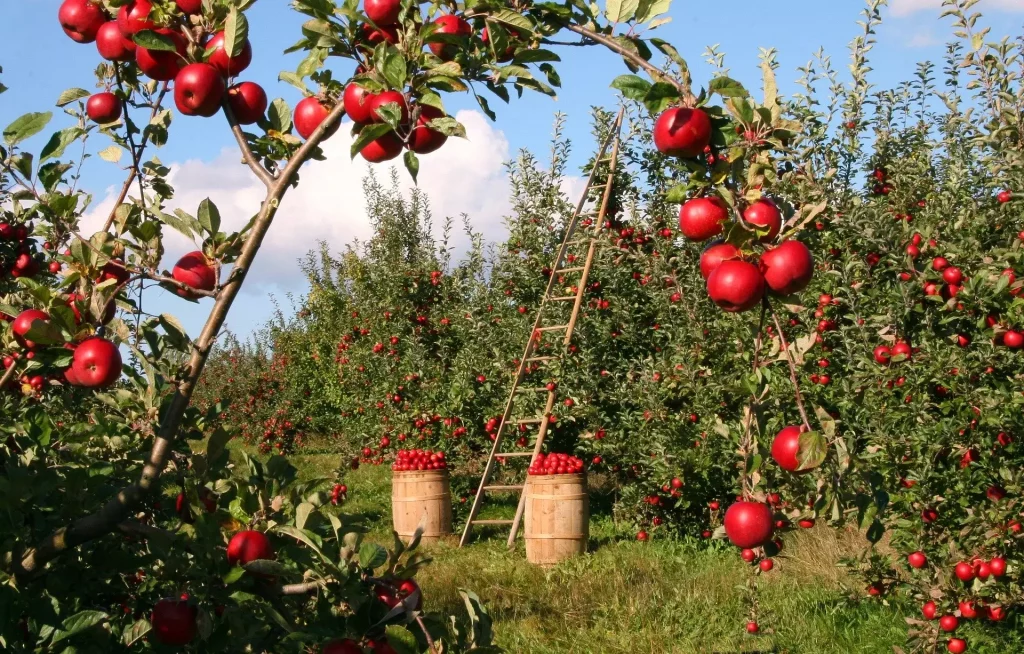
4. Handling and Transporting Apples
After picking, handle your apples with care to prevent bruising or damage. Place them gently in a basket, crate, or other containers with adequate ventilation and cushion the apples with paddings, such as straw or foam, to reduce movement and possible damage. Avoid overloading the containers to minimise pressure on the apples.
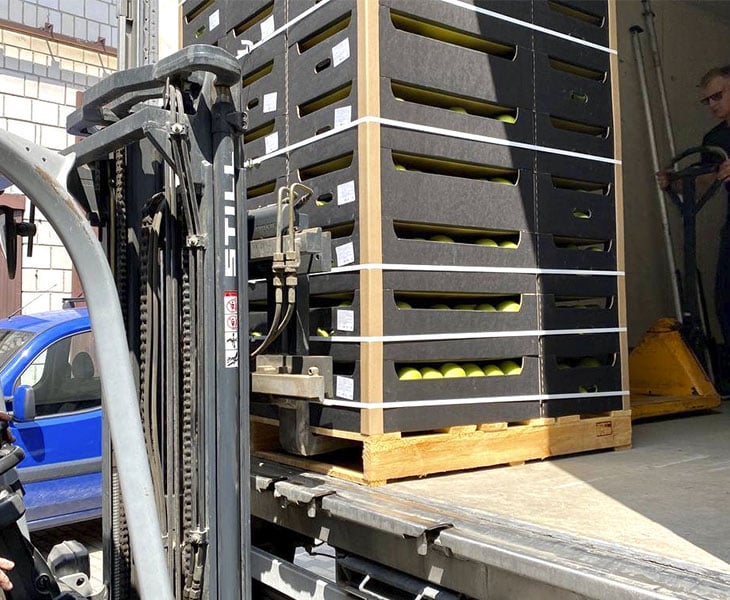
Factors that Affect Your Apple Harvest
A successful apple harvest is only half the battle; proper storage is crucial to ensure your apples remain fresh and delicious for months to come. Proper apple storage is essential to maintain the fruit’s quality, texture, and taste. Apples are prone to spoilage, and inadequate storage conditions can lead to rapid deterioration, waste, and potential health risks.
Additionally, apples release ethylene gas, which can cause other fruits and vegetables to ripen prematurely if stored together.
- Temperature: Apples thrive in storage temperatures between 0 to 4°C (32 to 40°F). Chilly temperatures help to decelerate the ripening process, safeguarding the apples’ freshness and warding off spoilage.
- Humidity: Elevated humidity levels are vital to prevent apples from unnecessary moisture and losing their signature crunch. Aim for a relative humidity of 90 to 95% to keep your apples in prime condition.
- Ventilation: Proper ventilation helps to dissipate the ethylene gas released by apples, reducing the risk of premature ripening and spoilage. Ensure adequate airflow around your stored apples, but avoid exposing them to strong drafts or sudden temperature fluctuations.
Storage Methods For Preserving Apples
1. Cold Storage
Storing apples in a refrigerator, cold room, or garage can provide the low temperatures and high humidity levels necessary for long-term preservation. Separate apples by variety and place them in perforated plastic bags, containers, or shallow trays lined with paper or straw. Remember to keep apples away from other products that might be sensitive to ethylene gas.
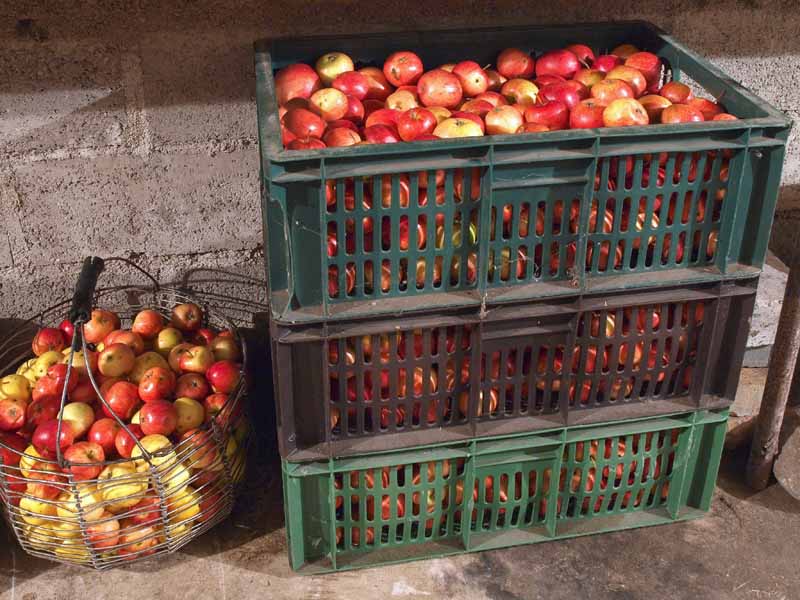
2. Controlled Atmosphere Storage
This method involves placing apples in airtight containers or rooms with reduced oxygen levels and increased carbon dioxide concentrations. While typically reserved for commercial use, controlled atmosphere storage can extend the shelf life of apples for several months, preserving their quality and flavour.
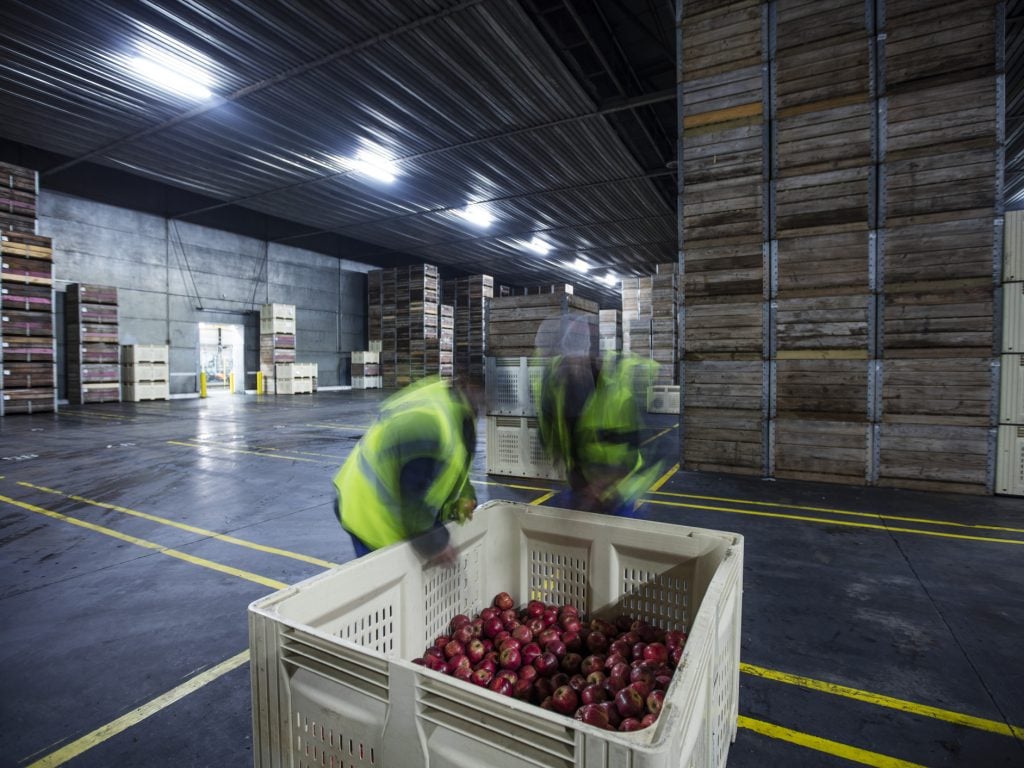
3. Root Cellar Storage
Traditional root cellars can provide a suitable environment for apple storage, thanks to their cool, damp conditions. Wrap each apple individually in paper or plastic to prevent the spread of spoilage and arrange them in single layers on shelves, ensuring they do not touch each other.
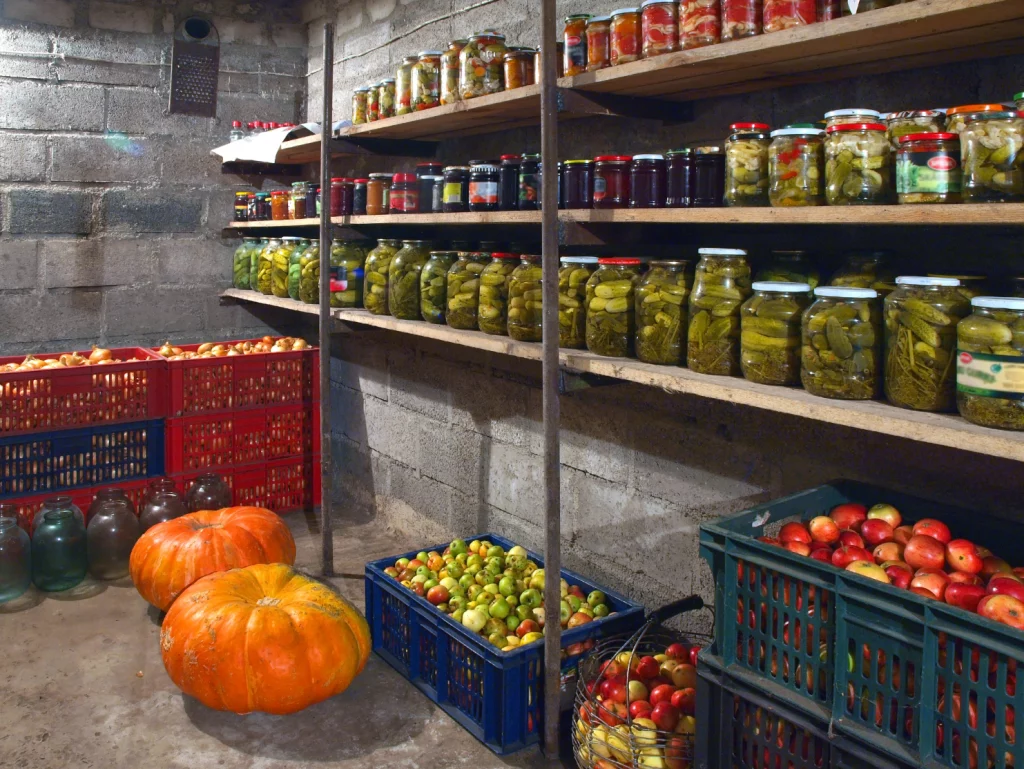
4. Canning Methods
Canning is a popular method for preserving apples in the form of sauces, butter, or jams. To can apples, prepare your desired apple product, then fill sterilised jars with the hot mixture, leaving a small headspace. Seal the jars with two-piece lids and process them in a water bath canner according to your recipe’s recommended processing time.
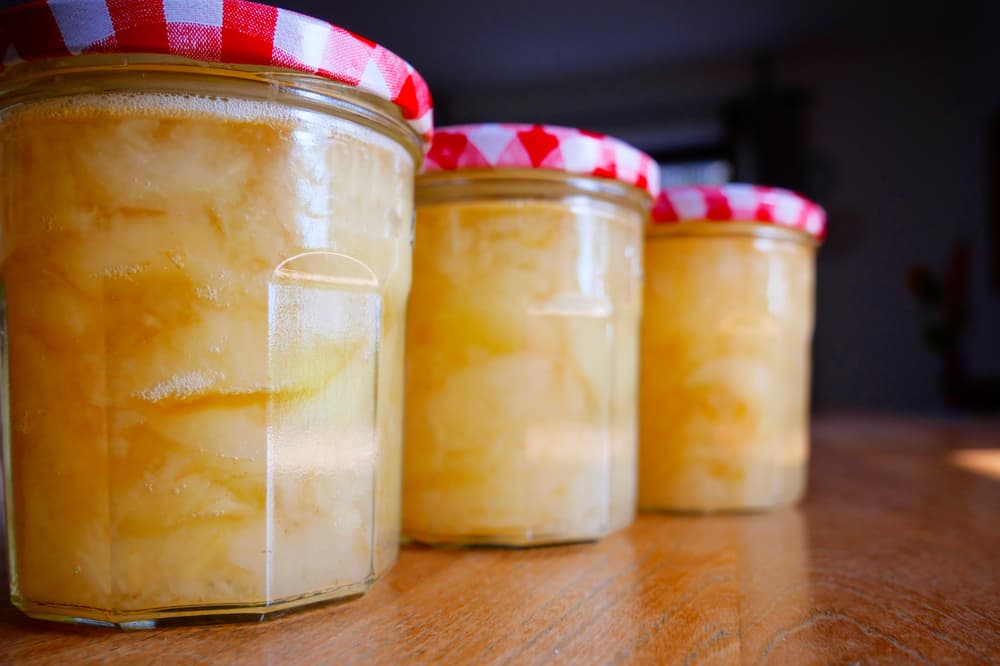
5. Freezing Methods
Freezing is an excellent way to preserve whole, sliced, or pureed apples for future use. To freeze apples, organise them in a single layer on a baking sheet and freeze until firm. Relocate the frozen apples to airtight containers or freezer bags, expelling as much air as possible to deter freezer burn.
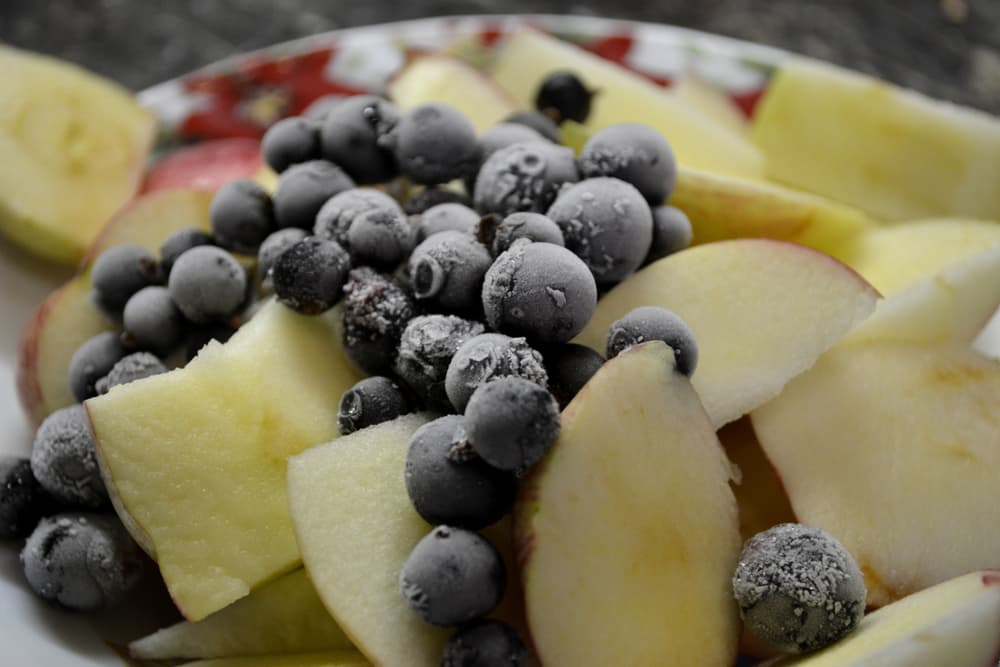
6. Vacuum Sealing Methods
Vacuum sealing is another effective method for preserving your harvested apples, particularly when combined with freezing. Place whole, sliced, or pureed apples in vacuum-seal bags and remove the air using a vacuum sealer. Seal the bags and store them in the freezer for extended shelf life and protection against freezer burn.
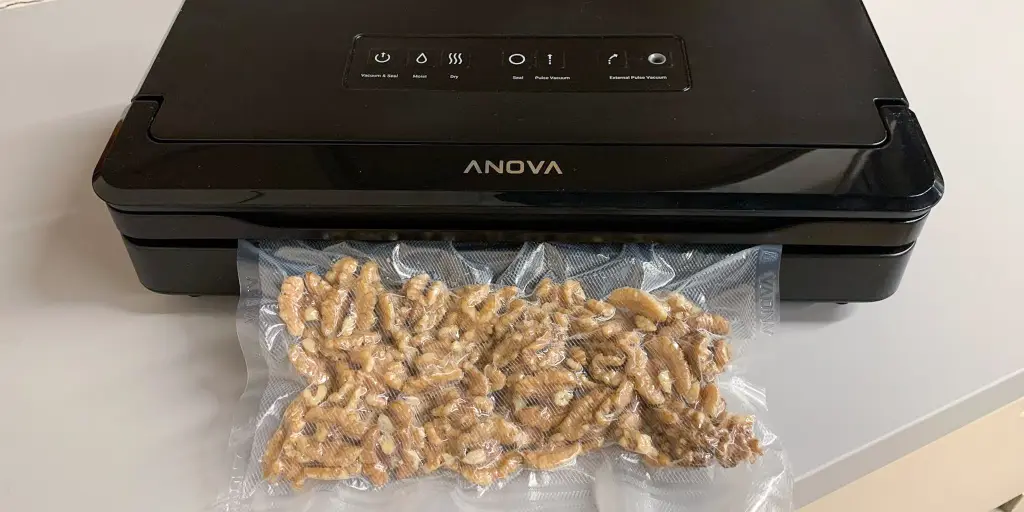
By exploring the various methods of processing and preserving apples, you can transform your bountiful harvest into an array of delightful apple products to enjoy throughout the year. Whether you’re sipping on freshly pressed cider, tucking into a warm slice of apple pie, or spreading apple butter on your morning toast, the versatile apple offers endless culinary possibilities.
Washing and Sorting Apples
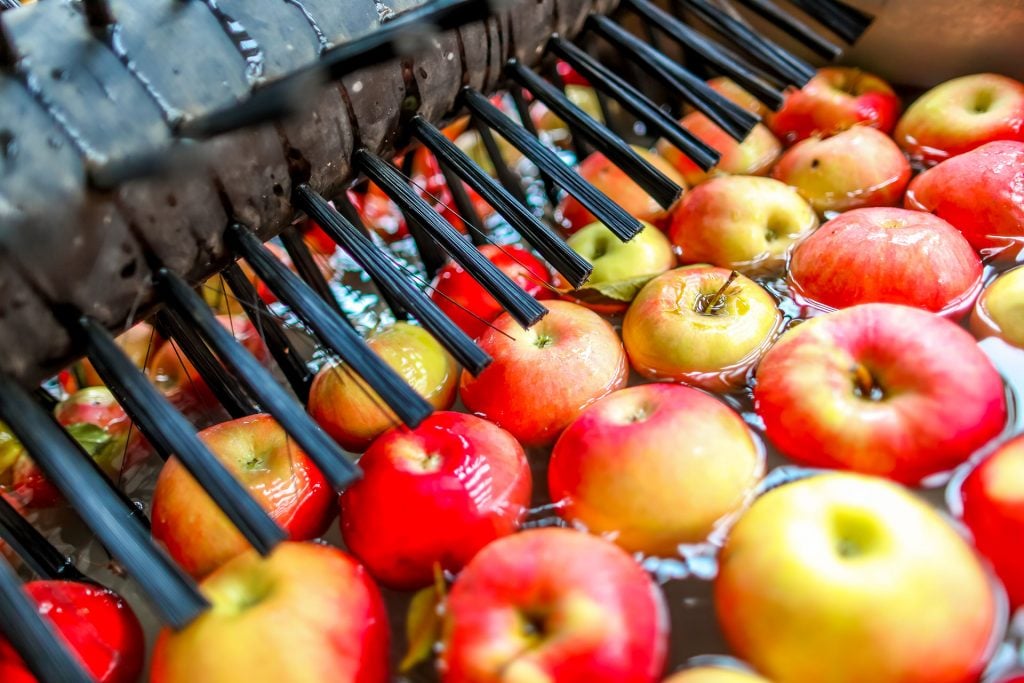
1. Removing Dirt and Debris
Before processing, diligently wash your apples to rid them of any dirt, debris, or residual pesticides. Douse the apples under cool, flowing water, employing a soft brush or cloth to scrub the surface tenderly. Avoid soaking apples, as this may cause them to absorb water and become mushy.
2. Separating Apples by Size and Quality
Sorting your apples by size and quality ensures consistent results in your final products. Separate the apples into groups based on their intended use, such as juicing, cooking, or fresh eating. Discard any apples with signs of spoilage, as they can affect the quality and safety of your processed apple products.
Peeling, Coring, and Slicing Apples
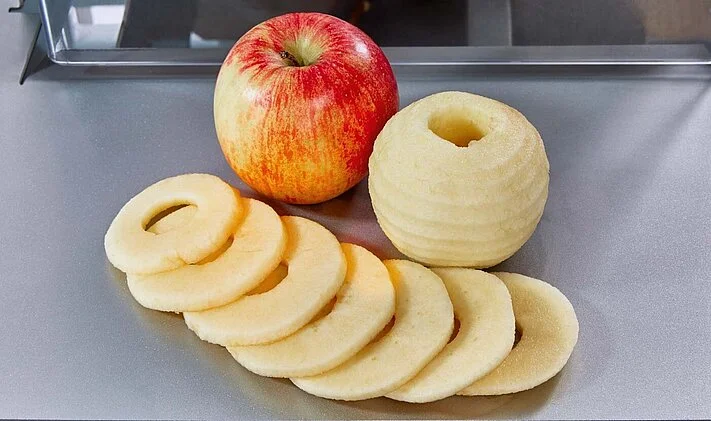
1. Manual Methods
For small-scale apple processing, manual methods such as using a paring knife, apple peeler, or corer can be effective. These tools require some skill and practice but offer greater control over the thickness and shape of your apple slices.
2. Mechanical Methods
For larger quantities or more efficient processing, consider using mechanical tools like apple peelers, corers, or slicers. These devices can save time and effort, producing uniform apple slices quickly and easily.
Maintaining High Standards for Delicious and Safe Apple Products
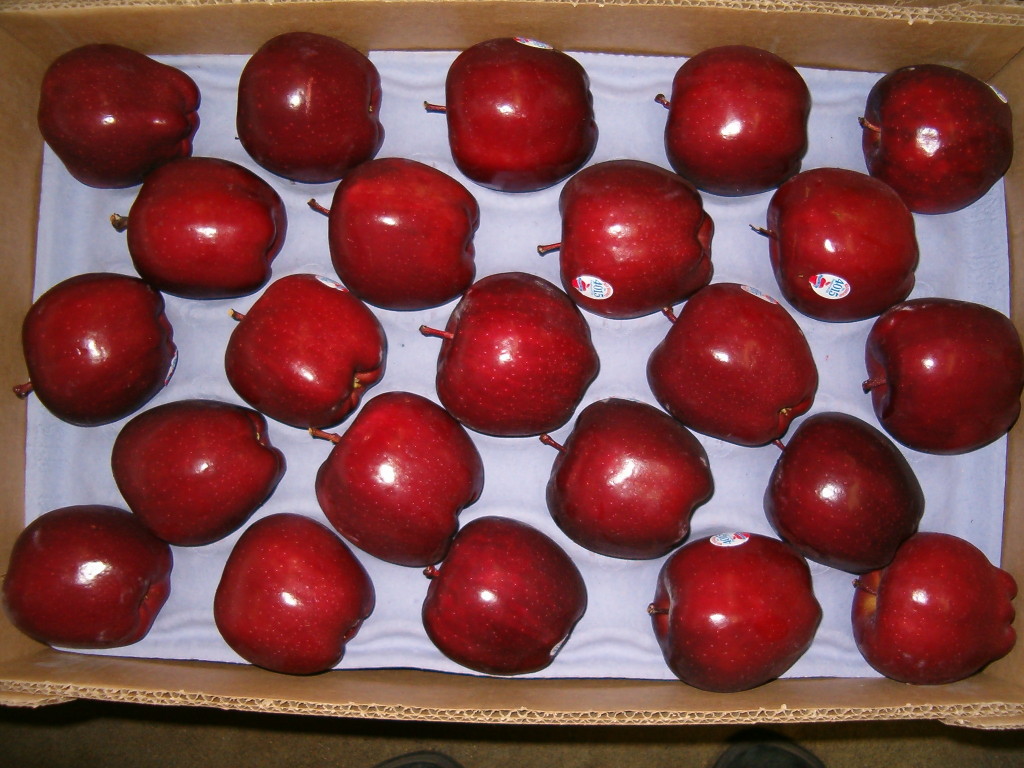
A successful apple harvest and processing journey should always prioritise safety and quality control. By adhering to strict cleanliness, sanitation, and food safety guidelines, you can ensure your processed apple products are not only delicious but also safe to consume.
1. Ensuring Cleanliness and Sanitation During Processing
Maintain a clean and sanitary work environment throughout the processing stages. Practice impeccable hygiene by frequently washing your hands, sanitising work areas and utensils, and avoiding cross-contamination with other food items or unsanitary surfaces.
2. Adhering to Food Safety Guidelines and Regulations
Follow all relevant food safety guidelines and regulations, including proper food handling, temperature control, and storage practices. Be aware of any specific requirements that may apply to your Apple products, such as pasteurisation or canning processes.
3. Proper Labelling and Packaging
Label and package your processed apple products with care. Include essential information such as the product name, ingredients, allergen warnings, and expiration dates. Use food-grade packaging materials that are designed to protect your apple products from spoilage, contamination, and damage.
By prioritising safety and quality control, you can confidently share your delicious apple creations with friends and family, knowing that they are both enjoyable and safe to consume.
Final Thought
Apples hold a special place in the hearts and kitchens of many cultures, featuring prominently in various traditional dishes and beverages. From comforting apple pies and crumbles to refreshing ciders and juices, these fruits have become an integral part of our culinary heritage.
We have explored the numerous aspects of harvesting, storing, and processing apples. From determining ripeness and utilising proper harvesting techniques to transforming them into delightful dishes, the versatile apple offers a world of possibilities. Knowing when to harvest apples is the key to making the most of your orchard’s bounty. As you embark on your apple harvesting, storing, and processing journey, remember that experimentation is key. Explore new varieties, try different processing methods, and discover unique flavour combinations.
By doing so, you will unlock the full potential of your apple harvest and create lasting memories around this beloved fruit.

